Recapturing the Night
On learning to reconnect with the stars through a telescope and a camera
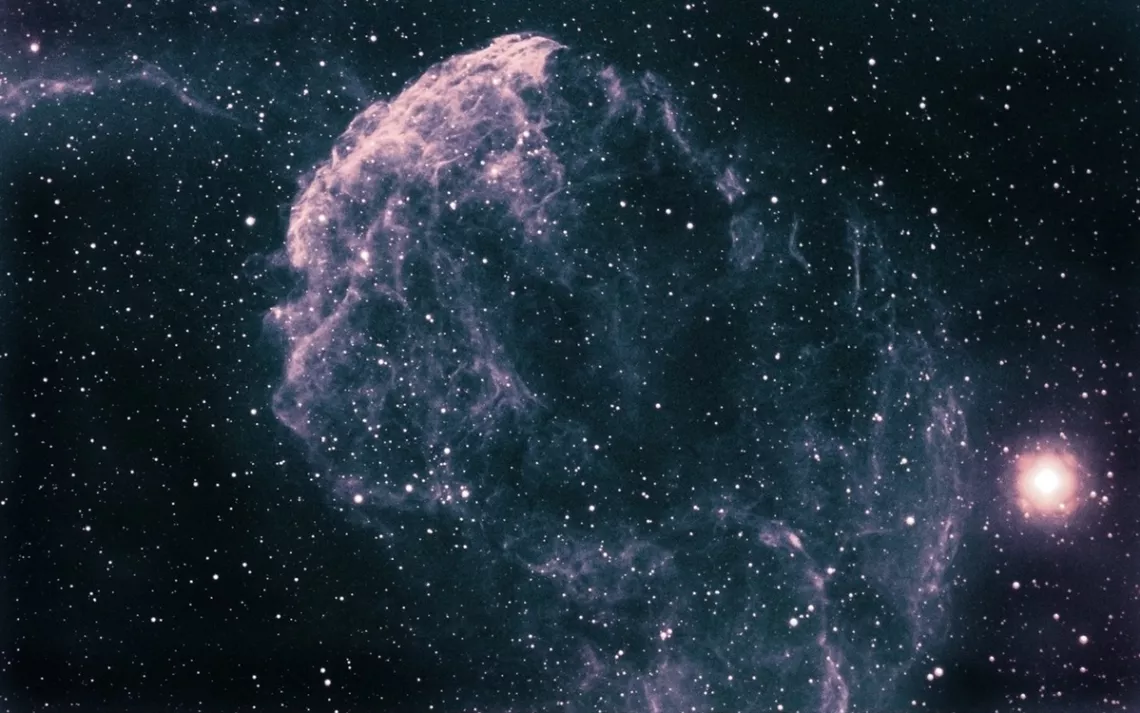
Photos by Jeremy Miller
I’m standing alone in my parents’ backyard on the outskirts of Paso Robles, on California’s Central Coast, scouring the clear, cold night for ancient light. The wind has shifted, bringing dry air from inland. Orion, the hunter, valedictorian of winter constellations, has emerged on the southern horizon. Overhead, the stars Rigel, Betelgeuse, and—brightest of all—Sirius glimmer like jewels in the blackness.
My wife, kids, and our friends visiting from New York are inside, huddled around the fireplace, reminiscing. But for more than an hour, I’ve been in self-imposed exile, in near-freezing temperatures, fidgeting with my small telescope. Tonight, it is aimed at a pinprick of light called Alnitak, the left-most star in the three-star array of Orion’s belt. Though Alnitak is not among the most vibrant stars in the winter sky, it is bright enough to be seen with the naked eye from even the most light polluted of urban areas.
Alnitak, however, is merely a reference point. What I’m really looking for is the Horsehead Nebula, the wispy veil of ionized gas that surrounds the star (a “faint fuzzy” as objects of this sort are referred to by astronomers). Roughly 1,500 light-years from Earth, the Horsehead is an emission nebula, a hot soup of gases and dust from which stars are born. One of the most beautiful and iconic objects in the night sky, the Horsehead is named for the striking and improbably shaped black horse-shaped notch, like a knight in a chess set, incised into its bright red veil of interstellar clouds.
Trouble is, even through a telescope, you can’t see the Horsehead’s fine detail—at least not from here.
Darkness is an increasingly rare commodity these days. We often hear that 80 percent of the US population lives in places where the Milky Way, the band of starlight defining the spiral structure of our galaxy, is no longer visible. That statistic, however, only hints at the true nature of the problem. Tens of millions of city dwellers can no longer see anything but the moon, a few planets, and a handful of the brightest stars. As a society we have been blinded by artificial light. Everywhere we go, the glow of sodium-vapor streetlights, halogen headlights, LCD screens, and tens of thousands of other point sources of light pollution sap the night sky of its structure.
My viewing platform in exurban Central California is no exception. Though the stars are far brighter in Paso Robles than they are above my home in the San Francisco Bay Area, the stray photons spilling into the skies over this town of roughly 30,000 is still enough to significantly impact the viewing. Yet there is a way that some of that darkness can be recaptured. Which brings me back to my telescope aimed at Alnitak. Tonight, I am not merely looking at the sky but attempting to take pictures of it. I’ve removed the eyepiece and replaced it with a digital camera. From the back of it, an array of wires juts like the tendrils of a jellyfish. The wires, in turn, are connected to my laptop, where I will store and eventually edit the images.
In a time of pervasive light pollution, the human eye is insufficient. Only the artificial eye of a camera can cut through the urban glow, to tease out the intricate color, structure, and detail of our galaxy’s most distant objects.
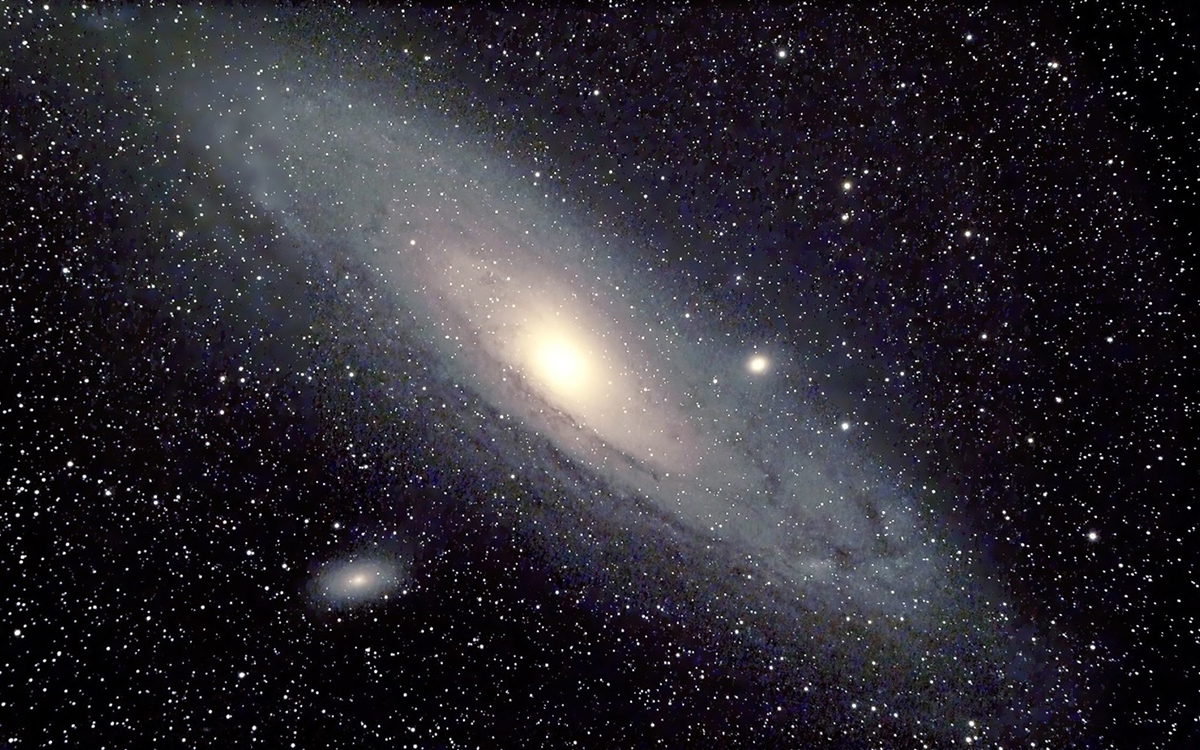
*
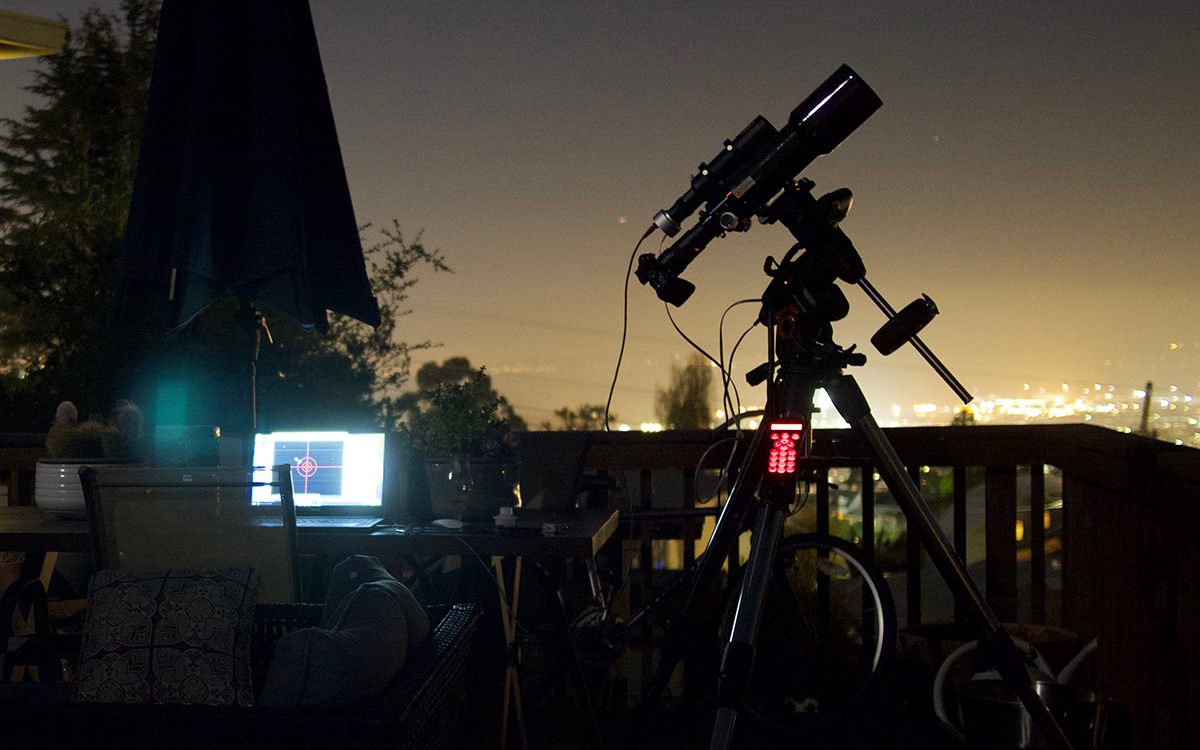
Setting up for a night of viewing in the light-polluted East Bay. A telescope and digital camera can help stargazers reconnect with the night sky.
Since I was a child, I have been mesmerized by the glossy images that adorn magazines such as Sky and Telescope and Astronomy. Until recently, however, I assumed that these pictures were collected by space telescopes orbiting high above the earth or massive research observatories scattered across remote mountains. But that is not the case these days. Many of the finest images are being captured by amateurs from their own backyards. You might even say we are in the midst of an “astrophotography revolution.”
The beginnings of astrophotography are often traced to the year 1850, when daguerreotypist John Adams Whipple and astronomer William Cranch Bond captured a grainy image of Vega, the brightest star in the summer sky, through Harvard University’s 15-inch refractor. From these early efforts, amateur astrophotography was born. The first photograph of a nebula was made in 1883 when an English amateur astrophotographer named Andrew Ainslie Common captured an image of the Orion Nebula through his 36-inch reflector. “[W]e are approaching the time,” Common wrote of his efforts, “where a photograph will give us the means to recording in its own inimitable way the shape of a nebula and the relative brightness of different parts, in a better manner than the most careful hand drawing.”
In the 20th century, amateur astrophotographers following in Common’s footsteps used mounts with mechanical “clock drives” and DSLR cameras loaded with high-sensitivity fast film. By exposing that film for long periods, photons emitted from objects thousands, even millions of light-years away would eventually congeal into an image. But the technical challenges were daunting. Because the camera shutter had to remain open for minutes or even hours at a time, the slightest jolt or hiccup of equipment would ruin an image. Once the exposure was made, astrophotographers had to spend more hours in virtual night, hunched over darkroom developing trays, to see if their efforts had actually paid off.
Computers and digital sensors have changed the game completely. Today, astrophotographers using affordable consumer digital cameras can capture images that would have shocked Edwin Hubble. And of course, hours in the darkroom are no longer required since the images can be transferred to a computer where they can be reviewed and edited instantly.
This explains the explosion of amateur astro-imagery on social media sites such as Instagram and Facebook. These amateur astronomers have handles like @deep.sky.dad, @backyardastronomyguy, and @thenakedsingularity. My personal favorite is a blog called Astrobackyard, published by a down-to-earth Canadian named Trevor Jones. Jones, who hails from Saint Catharines, Ontario, and works out of a garage adorned with hockey and beer posters, makes wonderful and intuitive instructional videos about how to pull dazzling images from light-polluted urban skies using inexpensive DSLR cameras and consumer-grade telescopes.
It would be misleading, however, to imply that all one needs to do in order to capture vivid deep space images is to buy a camera, plunk it to the back of the telescope, and shoot away. There is a significant list of gear required—and a host of techniques that must be learned—before it is possible to photograph deep space.
After a telescope, the most essential piece of equipment is a German Equatorial Mount, or GEM, which is designed to track the slow, ceaseless motion of the stars as Earth rotates on its axis. In order for the GEM to do its work, it must be painstakingly aligned in relation to Polaris, or North Star. This often-tedious process, known as “polar alignment,” can be the single-most frustrating and difficult aspect of astrophotography.
Even the sturdiest mount and most exact polar alignment, however, are not enough to ensure success. Sudden gusts of wind or slight vibrations of the mount can ruin a photography session. This is where another critical piece of equipment called the autoguider comes in. The autoguider is, for all purposes, a second small telescope and camera setup designed to lock onto a single star in the frame. Using sophisticated software, the autoguider tracks small shifts of that star from its expected position, relaying precise corrections to the mount to keep the star directly in its crosshairs. (If you imagine the mount as your hand on the steering wheel, the autoguider is the part of your brain that performs the small-scale corrections necessary to keep your car traveling safely in its lane.)
In many ways, astrophotography is a coordinated dance with disaster. Even when all the mechanical and electronic parts are working in harmony, other problems loom. Here in the Bay Area, a serious wild card is the weather. In winter, when the nights are long and the array of targets is best, the windows of clear skies between rainstorms can be cruelly short. In summer, fog can roll in like a curtain, veiling the stars and coating the lens in heavy dew. This is to say nothing of the digital glitches—inexplicable crashes, balky software, and oversubscribed hard drives—known to all computer users.
At some point, however, you’ve just got to set aside your doubt and let the shutter fire. It is at this juncture that I typically pour myself a glass of wine and relax. All that can be done is to wait. If the weather cooperates, the digital gremlins don’t bite, and your camera carries on capturing the photons you are seeking, you might get something that looks like this:
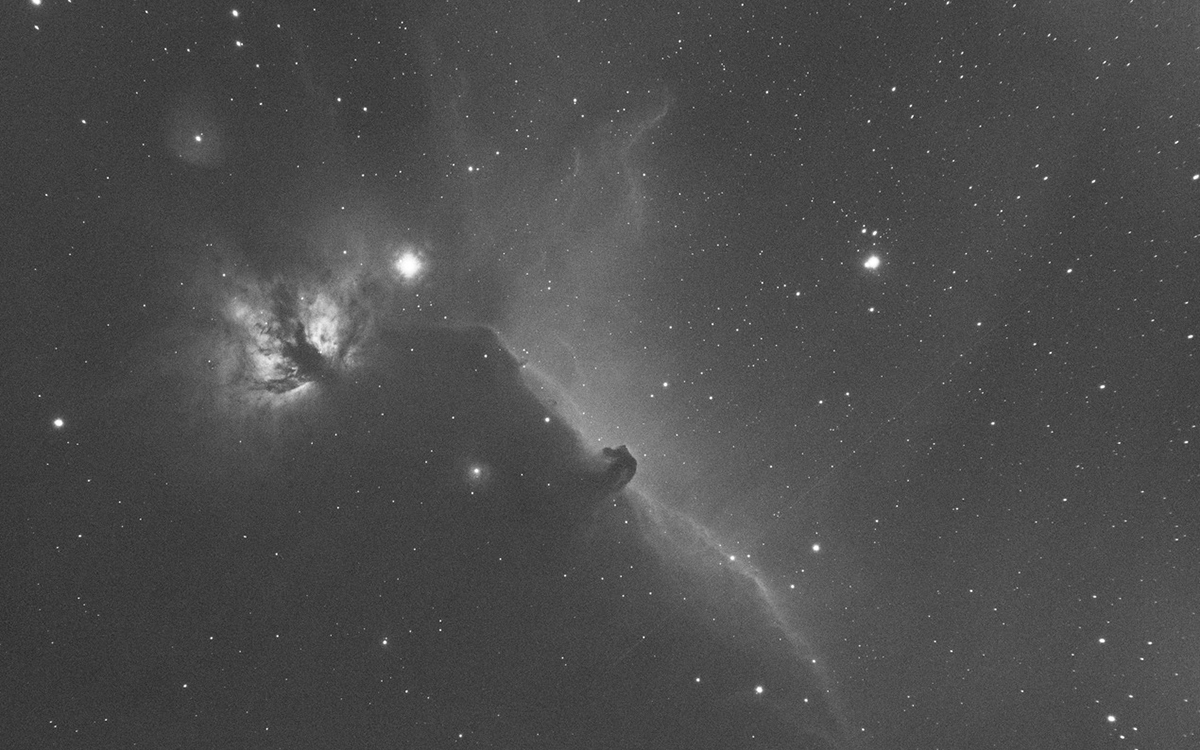
This black-and-white image is a single four-minute exposure captured through a hydrogen alpha “narrowband” filter, a specially designed piece of glass that allows red-tinged light from emission nebulae such as the Horsehead Nebula to penetrate through to the sensor. (These filters are key to photographing in severely light-polluted areas, since they eliminate all wavelengths of light except those emitted by the nebula.) But to really get the image to pop, you need several images—dozens, preferably—which can then be stacked into a composite. Below is the product of around 40 of these four-minute exposures, stacked and processed in Photoshop.
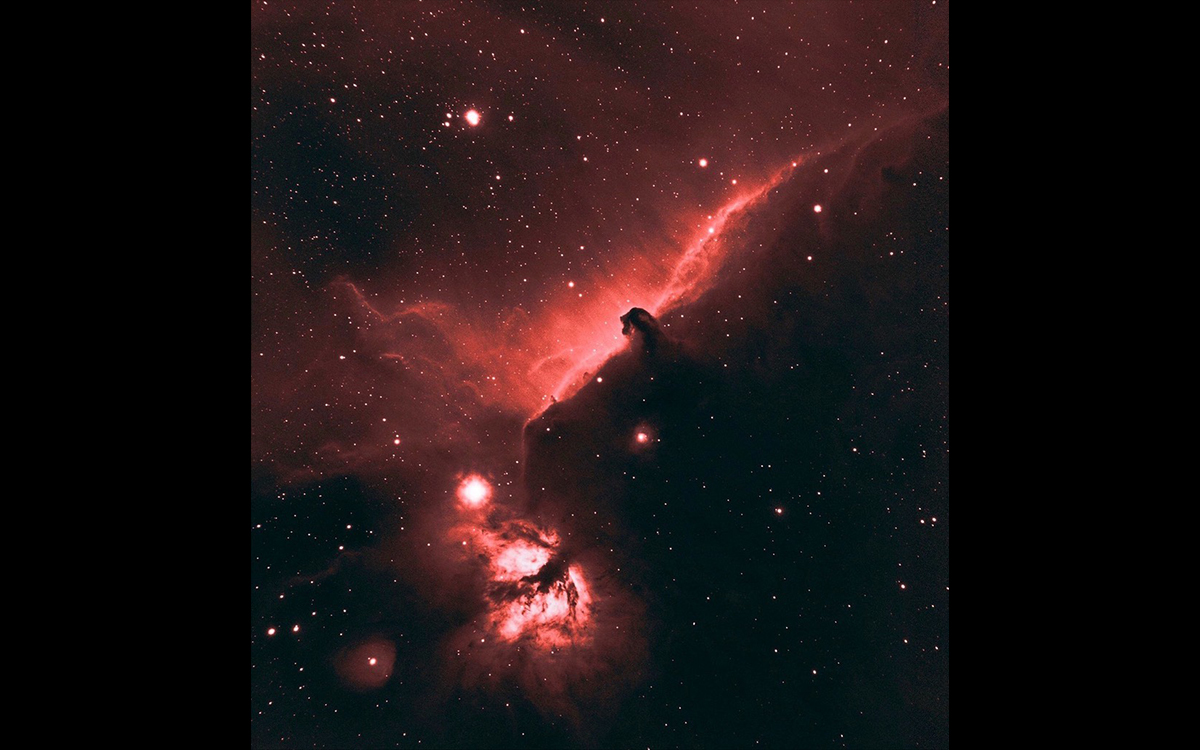
Seasoned astrophotographers will recognize that this image is far from perfect. For one, the stars in the upper-left corner of the images are slightly distended (the result of a slight misalignment of the camera on the back of the telescope). In addition to the physical blemishes, the image’s color palette is incorrect. While all the stars and gas clouds in my image are tinged red, the actual object is a riot of vivid pinks, whites, yellows, and blues. In astrophotography, there is near infinite room for improvement.
But regardless of one’s ability level, I have come to believe that the act of seeing and capturing these objects is a means of connection—testimony to the fact that we are, in the words of famed astrophysicist Carl Sagan, “a way for the universe to know itself.” Or, my friend and mentor, a fantastic Utah astrophotographer named Mark Bailey, once told me at his home observatory under a perfect, cloudless sky in southern Utah’s canyon country, “Through these iterations of stars and novas and supernovas, all of the elements were formed that make up you and me. And here we are standing on this rock in the middle of the Milky Way galaxy and we’ve become . . . conscious.”
As a science and nature writer—a person whose gaze is obsessively trained on what is happening on the surface of Earth—I have found that learning to capture images like these has reinforced my sense of the improbable wonder of our planet, namely that it is the only place in the universe that we know for certain is capable of harboring life. The beauty of these deep space objects also resides in how they accentuate our narrow experience of time. The light we see has traveled hundreds of billions of miles to meet our eyes or digital sensors. Which is to say, we perceive these objects not as they are but as they were. The delicate shape of the Horsehead we see today is a whisper from 1,500 years in the past. When these very photons began their journey, Mayan civilization was flourishing, Rome had collapsed, and the northern and southern dynasties of China were being reunified. The epic poem Beowulf had just been penned, and people across India were engaging in a new pastime called chaturaṅga, an early form of the game we know today as chess.
And yet, the Horsehead’s seemingly timeless form is made more profound by its impermanence. Like a fleeting pattern in the clouds, the horsehead—randomly composed within an ever-expanding cloud of interstellar gas—probably no longer exists. I often wonder whether, in the last millennia and a half, it has morphed into some other recognizable figure. A toucan? A humpback whale? A human face?
If we as a species are wise enough to avoid planetary cataclysm—either natural or of our own making—future astrophotographers may peer into the past, to show our descendants what the Horsehead Nebula looked like when we were alive.
 The Magazine of The Sierra Club
The Magazine of The Sierra Club



